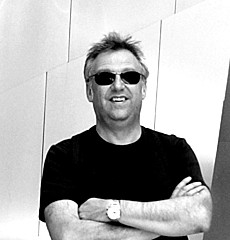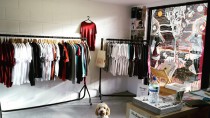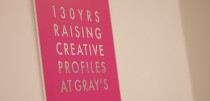
With the support of the Design Council, Central Station has recruited Andy Harrold to be our Design Champion. Here we talk to the man himself to find out more about the role and to hear his ideas for making Central Station an even more effective tool for designers.
Tell us a bit about your background.
My design experience was shaped by my passion for contemporary and mid-century design which I converted into a business called Nicehouse back in 1989. At the beginning, I scraped a living on a £40 / week enterprise allowance scheme invented by the conservative government to create more business start-ups. Once established, I subsequently championed local design talent. This was an unmet need of both designers I knew as customers and my wider market. I produced local designers’ product ideas because that differentiated my business. Products from local designers initially featured only in my retail store but eventually by working with UK based architects on commercial projects lead to commissioning the production of contemporary furnishing for bigger projects. This led to my own production of a collection of plastic furniture and lighting in 1999 with my design partners “one foot taller” and “graven images”. A few career highlights were winning the prestigious UK government Millennium Award Status for our chairs production, The 2001 Peugeot Design award a £7k prize for our designers which also led to exciting exposure for our products on the set of Big Brother 3.
Alas, Nicehouse didn’t last, and since then I did a Masters in Design Thinking and have worked as a freelance consultant with design teams. Now I own and run a Glasgow based practice called Buro-Designthinking.com.
What is the role of ‘design champion’ for Central Station?
MA is the new MBA / Design is Business / Business is Design. My ambition is to turn these maxims into real connections for our design community at Central Station. The community of creatives who make things that people use should have a higher expectation for this network and should be making it easy to signal what types of collaboration they are looking for.
So one question I’m asking is: should business graduates be encouraged to use this creative network? Definitely! I’d like to test that ‘idea dating’ theory I’ve had for a while, I suspect collaboration is going to be an essential part of the designers toolkit to be tested on Central Station. Why stop at Business graduates? What about social scientists and anthropologists? Basically, the network should encourage any people with insights and ideas to create new outcomes for people’s needs.
My question is do members of the network want to go down a more proactive business development road? I’m currently having this design dialogue with some selected players as I write. My insights will be revealed in January sometime.
Can you give us a taster of some of your ideas/aims for the role?
I’d like to begin by putting focus on the design of things we use, rather than things we see, (and rather than individuals just for the moment) which is well represented at Central Station. I’d like to harness the energy of product/service designers to a real market demand for good ideas. So coaching product and service designers into being more visually explicit on the Central Station network would be good start. But actually good ideas don’t usually thrive unless they meet a business need.
So, as outlined in the previous question, I’d like to introduce other creative partners to this network, so long as they share an ambition to make something better than it is now, specifically by coming together with this community of designers.
Will there be an opportunity for members to get involved? If so, how?
It is imperative that designers get involved. I haven’t worked a full plan up yet but I do fantasise about creating a micro-financing system to prove the concept of entrepreneurial projects that designers and their partners initiate. Even better, I’d like to give any individual /organisation a reason to engage with our design community in particular, but not exclusively, with product/service designers. These first baby steps should be about building trust and credibility with outside collaborators to engage with our community of local product/service designers on projects of any scale. I think some public design problems put in an open tender would be a good starting point. Perhaps even forcing some designers to work on problems in diverse teams. Including those designers like myself who only look for the insights that might motivate others into action. All of which means I need to work fast, prove a demand and source resources to make it real.
Tell us about your own design inspirations/who you find inspiring working in design today?
Particularly in Scotland but it could be relevant to northern Britain: I get the feeling that the new product development process is a bit broken. There is just not enough of it going on. I’m inspired by the many seemingly innocuous stories of businesses that are transformed into world players because at some point “design thinking” was embraced by the boardroom and a “deep design culture” ensured success was the outcome. Design became their market advantage. I’ll be posting on stand out case studies as time goes by.
At the moment I’m inspired by the design thinkers who get this mood down on paper, so players like Roger Martin, Dean of Rotman Business School, writer of The Design of Business. Tim Brown’s Change by Design also makes clear how it is achieved, the currency of these ideas is the design narrative I want to build upon inside Central Station.
Supported by:















Comments